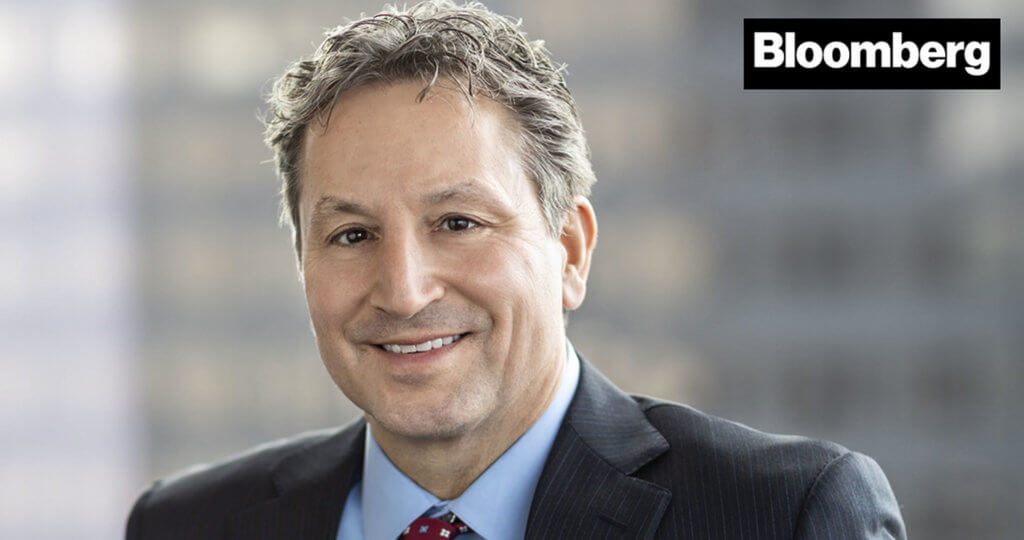Oakmark Global Fund - Investor Class
Average Annual Total Returns 06/30/15
Since Inception 08/04/99 10.98%
10-year 8.27%
5-year 13.18%
1-year -0.19%
3-month -0.87%
Gross Expense Ratio as of 09/30/14 was 1.11%
Past performance is no guarantee of future results. The performance data quoted represents past performance. Current performance may be lower or higher than the performance data quoted. The investment return and principal value vary so that an investor’s shares when redeemed may be worth more or less than the original cost. To obtain the most recent month-end performance data, view it here.
An otherwise unremarkable June quarter ended on a disappointing note for equity investors, including those in the Oakmark Global Fund. The prospect of Greece’s exit from the euro materialized on June 29, and markets tumbled worldwide because of the unprecedented character of this situation. Although some have argued otherwise, we do not believe that a Greek euro exit compares much at all to the collapse of Lehman Brothers in 2008. Greece is a small country of 11 million people, its economy constitutes roughly 2% of the EEC and the international commercial banking system has little exposure to the country’s debt. Whether Greece’s withdrawal from the euro could benefit the country’s citizens remains to be seen, but we do not see this possibility to be systemically threatening. Nevertheless, as we write this report, markets worldwide are troubled, so we have taken the opportunity to add to some of the Fund’s holdings.
In the June quarter the Oakmark Global Fund lost 1%, while the MSCI World Index was unchanged in the period and the Lipper Global Fund Index’s return was 1%. For the calendar six months the Fund gained 1% versus 3% for the MSCI World Index and 4% for the Lipper Global Fund Index. Finally, for the nine months of the Fund’s fiscal year the Fund returned 4%, which compares to 4% for the MSCI World Index and 4% for the Lipper Global Fund Index. Since its inception in 1999, the Fund has achieved a compound annual rate of return of 11%, which contrasts to 4% for the MSCI World Index and 5% for the Lipper Global Fund Index.
In our last letter we noted that the March quarter saw a change in performance leadership. In 2014 U.S. holdings substantially outperformed international holdings. Beginning in the March quarter, this pattern reversed, and this continued through June, although to a lesser degree. Someone looking at the Fund as a whole would not easily see how the composition of returns had changed, since the total returns for the Fund have been unexceptional. Of course, this demonstrates the primary rationale for global investing—that markets worldwide are not usually closely correlated and global diversification offers the possibility to take advantage of opportunities wherever they may develop. In 2014, we reduced U.S. exposure and increased international holdings.
In the June quarter Switzerland, the U.K. and the Netherlands contributed most to the Fund’s return while the U.S., Germany and Korea detracted the most. The individual holdings that contributed most to return were Julius Baer (Switzerland), CNH Industrial (Netherlands), Tenet Healthcare (U.S.), Bank of America (U.S.) and Credit Suisse (Switzerland). Fund holdings that detracted most from return were Interpublic Group (U.S.), TE Connectivity (Switzerland), General Motors (U.S.), Union Pacific (U.S.) and Applied Materials (U.S.).
In the first six months of 2015 Switzerland, Japan and Australia led the contributors list while the U.S. and Korea detracted. Individual significant contributors were Julius Baer, Credit Suisse, Hirose Electric (Japan), Health Net (U.S.) and CNH Industrial (Netherlands). All five of the top detractors were U.S.-domiciled: Union Pacific, National Oilwell Varco, Applied Materials, Chesapeake Energy and Intel.
Finally, for the fiscal year that began October 1 the countries that contributed the most to the Fund’s return were Switzerland, Australia and the U.S. while the Netherlands and France detracted. The five largest contributors to Fund return in the period were Julius Baer, Health Net, MasterCard (U.S.), TE Connectivity and Incitec Pivot. The Fund holdings that detracted most were National Oilwell Varco, Chesapeake Energy, Philips (Netherlands), Fugro (Netherlands) and Intel.
Low Volatility Investing?
Many years ago one of us had a client who pulled his account from our management after a remarkably short tenure. When asked why he was leaving, he replied that he had never before paid any attention to the stock market, and he could not see any justification for the daily price movements. He stated that when he owned his business, he knew that every night when he went home that the business’s value had increased. The fact that the stock market did not understand things in this manner troubled him greatly. He liquidated his equity portfolios with outside managers and invested the proceeds in municipal bonds to minimize the volatility.
Today we see this gentleman’s thinking illustrated in a different fashion. If you opened the business section of the morning newspaper during the past year, you likely saw an article that highlighted the latest funding round of another venture capital backed start-up. The words “record valuation” were no doubt included—words that are now so commonplace that their historical meaning is fading. According to the Wall Street Journal, 99 companies inhabit the “Billion Dollar Startup Club,” and these companies sport a total value of over $400 billion. Some of these companies, such as Airbnb and Theranos, now have valuations almost as high as their established public competitors, e.g. Marriott and Quest Diagnostics. Many market commentators are warning that a bubble in the tech start-up market is developing. Although our inclination is to be fearful when others are greedy, we do not profess to have a strong view on the value of these private companies. However, this dynamic does provide a backdrop for us to highlight our view on the role of risk in investing.
Risk is often defined by academics as price volatility. Measured in this way, these private start-ups seem to be fairly safe: their valuations have steadily marched upwards, and the volatility—especially relative to public market companies— is very low. Some academics would further argue that these private investments are less correlated with the stock market than their public peers, and therefore these private investments have portfolio diversification benefits. To us, this logic is flawed. Investors should not gain a false sense of security from the lack of a daily quotation for private companies, just as they should not be frightened by the sometimes volatile daily quotations of public companies. For every investable asset—publically traded or otherwise—the underlying value of the asset is the sum of the discounted future cash flows, and risk comes from paying too high a price for those cash flows. Looked at in this way, MasterCard is not a riskier investment because it is publicly traded, and an art collection is not a safer investment because it is only priced at auction. The same goes for today’s tech start-ups.
In managing funds in the Oakmark group, we insist on buying companies at what we believe is a meaningful discount to the intrinsic value of the business—regardless of the volatility in the security’s price. Of course, every investment has its degrees of uncertainty, and the level of uncertainty should influence the price an investor is willing to pay. At the same discount to intrinsic value, it is clearly preferable to purchase a stable company with a narrow range of outcomes than an unpredictable business with a wide range of outcomes. Correspondingly, we demand a larger discount to intrinsic value to buy shares in a less predictable business. Many of today’s tech start-ups are relatively immature companies that have not proven their long-term durability. In this way, these start-up companies are actually far riskier investments than their more price-volatile public counterparts. We believe investors would be wise to demand a larger-than-normal discount to intrinsic value before undertaking such investments. While many of our peers have launched private investment funds to capitalize on the start-up trend, we will be sticking to our knitting— investing in companies that we understand and can reasonably predict and that are trading at a meaningful discount to their underlying business value.
Portfolio Activity
Our trading activity in the quarter produced one new U.S. holding, and we eliminated three international holdings. Although this gives the appearance of a shift in portfolio allocation to the U.S., disparate market returns caused the actual weights to be unchanged at quarter’s end. As well, the three international eliminations had already been cut back to small position sizes, and the new U.S. purchase is itself a small holding. As we always write, we did not intentionally choose the ending U.S. or international allocation; these allocations are the product of our bottom-up search for value across the globe.
New holding USG is the largest producer of wallboard in the U.S. and a leading manufacturer of other building products. After spending five years in bankruptcy related to asbestos in the early 2000s, USG finally reached an agreement to emerge—with its equity intact—on precisely the same month in 2006 that housing starts entered one of the deepest and longest downturns in U.S. history. Nine years later, housing starts are still significantly depressed relative to trend, and USG’s profits are even more so. It’s no surprise that investors aren’t tripping over themselves to buy shares of USG. But looking further out, as housing and other construction markets fully recover, we believe USG will be earning considerably more and producing substantial free cash flow as the company benefits from large tax assets that help to shelter earnings.
We exited positions in Adecco (Switzerland), Rheinmetall (Germany) and Travis Perkins (U.K.) because we found better opportunities elsewhere in the Fund.
Currency Hedges
Global currencies were relatively stable during the quarter. However, both the Swiss franc and Australian dollar strengthened versus the U.S. dollar. We continue to believe these currencies are overvalued and as a result defensively hedge a portion of the Fund’s currency exposure. Approximately 39% of the Swiss franc and 18% of the Australian dollar were hedged at quarter end.
Thank you for being our partners in the Oakmark Global Fund. Please feel free to contact us with your questions or comments.
As of 06/30/15, Julius Baer Group, Ltd. represented 4.6%, CNH Industrial N.V. 4.0%, Tenet Healthcare Corp. 2.9%, Bank of America Corp. 3.8%, Credit Suisse Group 6.3%, Hirose Electric Co., Ltd. 1.7%, The Interpublic Group of Cos., Inc. 3.1%, TE Connectivity, Ltd. 4.0%, General Motors Co. 3.3%, Union Pacific Corp. 2.6%, Applied Materials, Inc. 1.9%, Health Net, Inc. 2.8%, National Oilwell Varco, Inc. 1.7%, Chesapeake Energy Corp. 1.2%, Intel Corp. 1.9%, MasterCard, Inc. Class A 3.1%, Incitec Pivot, Ltd. 3.0%, Koninklijke Philips NV 1.9%, Fugro NV 1.0%, Marriott International, Inc. 0%, Quest Diagnostics, Inc. 0% USG Corp. 0.6%, Adecco SA 0%, Rheinmetall AG 0%, and Travis Perkins PLC 0% of the Oakmark Global Fund’s total net assets. Portfolio holdings are subject to change without notice and are not intended as recommendations of individual stocks.
Click here to access the full list of holdings for The Oakmark Global Fund as of the most recent quarter-end.
The MSCI World Index (Net) is a free float-adjusted market capitalization weighted index that is designed to measure the global equity market performance of developed markets. This benchmark calculates reinvested dividends net of withholding taxes using Luxembourg tax rates. This index is unmanaged and investors cannot invest directly in this index.
The Lipper Global Funds Index measures the performance of the 30 largest mutual funds that invest in securities throughout the world. This index is unmanaged and investors cannot invest directly in this index.
The Oakmark Global Fund’s portfolio tends to be invested in a relatively small number of stocks. As a result, the appreciation or depreciation of any one security held by the Fund will have a greater impact on the Fund’s net asset value than it would if the Fund invested in a larger number of securities. Although that strategy has the potential to generate attractive returns over time, it also increases the Fund’s volatility.
Oakmark Global Fund: Investing in foreign securities presents risks that in some ways may be greater than in U.S. investments. Those risks include: currency fluctuation; different regulation, accounting standards, trading practices and levels of available information; generally higher transaction costs; and political risks.
Oakmark Global Fund: The percentages of hedge exposure for each foreign currency are calculated by dividing the market value of all same-currency forward contracts by the market value of the underlying equity exposure to that currency.
The discussion of the Fund’s investments and investment strategy (including current investment themes, the portfolio managers’ research and investment process, and portfolio characteristics) represents the Fund’s investments and the views of the portfolio managers and Harris Associates L.P., the Fund’s investment adviser, at the time of this letter, and are subject to change without notice.







